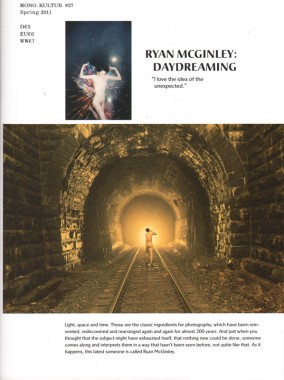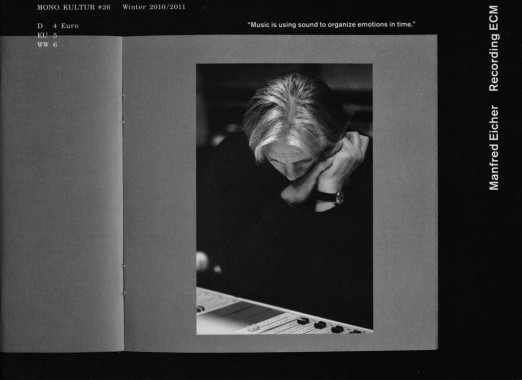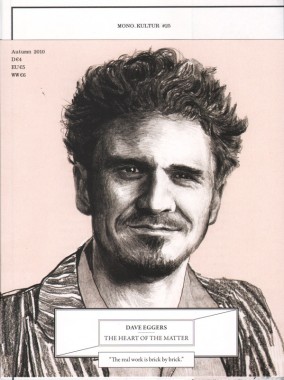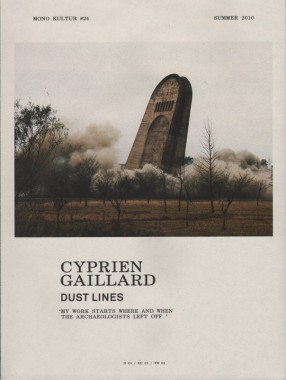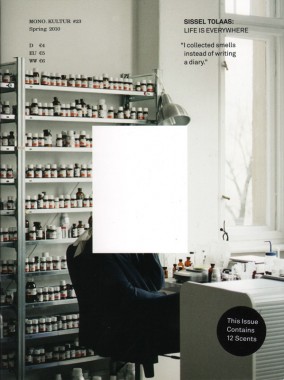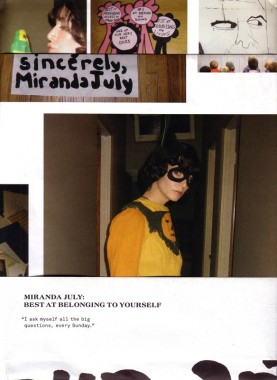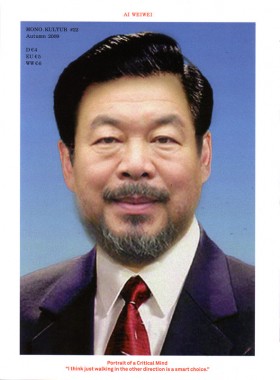Mono.Kultur 27
Mono.Kultur 27, Ryan McGinley
Softcover, 44 pp., offset 4/4, 150 x 200 mm
Edition of 5000
ISSN 1861-7085
Published by Mono.Kultur
$10.00 · out of stock
Ryan McGinley’s steep ascent within the world of photography appears almost as effortless as his images: Born in 1977 in New Jersey, he moved to New York in 1996 to study graphic design at Parsons School of Design, where almost by accident he discovered his love for photography. Incessantly shooting his friends and surroundings, McGinley inadvertently documented the microcosm of youth culture in New York at the turn of the millennium in a body of work that stood out for its energy and optimism, despite the grit and rawness of the images — a style that should later draw comparisons to the work of Nan Goldin, Larry Clark and Robert Frank. In the meantime, McGinley befriended a group of local artists and creative types — among them his close friends Dan Colen and the late Dash Snow — that would soon be hyped as a ‘new movement’ by the press, a label based more on the excessive lifestyle the three had in common than their actual and quite disparate work.
And so for the past ten years, McGinley has continuously been one step ahead, and is already taking the next corner of his young career — like the teenagers in his images, like youth itself, always on the run, always looking for the next thing, but always with the unmistakable energy and optimism and lightness that ultimately characterizes all of his work. Because no one these days sculpts light, space and time quite in the same way as Ryan McGinley.
Mono.Kultur 26
Mono.Kultur 26, Manfred Eicher — Recording ECM
Softcover, 42 pp., offset 1/1, 200 x 150 mm
Edition of 5000
ISSN 1861-7085
Published by Mono.Kultur
$9.00 · out of stock
In 1969, a meeting with the American jazz pianist and composer Mal Waldron led to Eicher’s first impromptu production and official release, Free at Last. The immediate success of the record beckoned for more, encouraging Eicher to move backstage and from then on to dedicate his life to finding and producing new music rather than performing. On the outskirts of Munich, with little financial backing, less strategy and no experience in production or managing a record label, Manfred Eicher launched ECM Records as a platform for jazz, a primarily American phenomenon on its wane.
Mono.Kultur 25
Mono.Kultur 25, Dave Eggers
Poster and wrap-around cover, offset 3/3, 150 x 200 mm [700 x 1000 mm unfolded]
Edition of 5000
ISSN 1861-7085
Published by Mono.Kultur
$9.00 ·
Mono.Kultur 23
Mono.Kultur 23, Sissel Tolaas
Softcover, 44 pp., offset 4/1, 150 x 200 mm
Edition of 5000
ISSN 1861-7085
Published by Mono.Kultur
$9.00 ·
Meanwhile, Sissel Tolaas is a phenonemon in herself: born and raised between Norway and Iceland, with degrees from Scandinavia, Poland and Russia in sciences, chemistry and fine arts, Tolaas has become an expert on everything related to scents, odours, smells. She is a professor at Harvard Universiy for invisible communication, while working on hospital and research projects as well as for commercial clients; while exhibiting the results of her research in museums such as the MoMA New York, the National Musem of Beijing or the Hamburger Bahnhof in Berlin. A vibrant and determined character with a unique expertise and biography, Sissel Tolaas is everything we could have hoped for in our forthcoming issue.
Mono.Kultur 16
Mono.Kultur 16, Miranda July
Softcover, 16 pp. + poster, offset 4/1, 140 x 200 mm
Edition of 5000
ISSN 1861-7085
Published by Mono.Kultur
out of print
During this time, she also founded Joanie 4 Jackie (formerly Big Miss Moviola). Joanie 4 Jackie was a non-commercial distribution system for women video-makers in the pre-YouTube mid-1990s. Any woman could submit a video short and July would put it onto a compilation tape with nine other videos; she then re-circulated these new ‘chain letter’ tapes so each video-maker could see what others were making. Joanie 4 Jackie was an explicitly feminist project, stemming from the anti-consumerist ethos of third wave feminism. Feminist concerns are also evident in July’s early short video works, which explored mother/daughter dynamics, voyeurism, and female spectatorship. In her videos The Amateurist and Nest of Tens, her characters hunt for or establish patterns, imposing their own personal systems of control onto the bewildering world around them. She extended these themes of unexpected longing and loss in Me and You, her short stories, and her recent performances.
Mono.Kultur 22
Mono.Kultur 22, Ai Weiwei
Softcover, 40 pp. + poster, offset 4/1, 140 x 200 mm
Edition of 5000
ISSN 1861-7085
Published by Mono.Kultur
$9.00 · out of stock
Mono.Kultur 21
Mono.Kultur 21, Tilda Swinton
Softcover, 32 pp., offset 4/1, 140 x 200 mm
Edition of 5000
ISSN 1861-7085
Published by Mono.Kultur
$9.00 ·
—Tilda Swinton
Mono.Kultur 20
Mono.Kultur 20, Dries van Noten
Softcover, 40 pp., offset 4/1, 140 x 200 mm
Edition of 5000
ISSN 1861-7085
Published by Mono.Kultur
$9.00 · out of stock
The conversation with Dries van Noten took place in a setting reminiscent of an old Flemish still life painting: at a very long table prepared for lunch in the company’s renovated warehouse in Antwerp, in the historic part of the harbour once built by Napoleon.
Mono.Kultur 19
Mono.Kultur 19, Michael Ballhaus
Softcover, 32 pp., offset 4/1, 140 x 200 mm
Edition of 5000
ISSN 1861-7085
Published by Mono.Kultur
$8.00 ·
In 2007, Ballhaus announced his retirement from Hollywood after 47 years and more than one hundred films, which turned his eye for light and spaces, his sense for evocative and moving pictures into a legend. He grew up as part of his parent’s theatre in Bavaria, completed a classical photographer’s training and got into German television in the 60s, a time of change. Young filmmakers such as Hans W. Geißendörfer and Fassbinder had declared the old cinema dead and were creating new material, new faces and new pictures whose depth Ballhaus brought into focus from behind the lens.
Mono.Kultur 18
Mono.Kultur 18, MVRDV
Softcover, 32 pp., offset 4/1, 140 x 200 mm
Edition of 5000
ISSN 1861-7085
Published by Mono.Kultur
$8.00 ·
What we gain in pondering MVRDV is insight into the richness of a practice that is embedded as much in reality as it is in the theoretical dimensions of the virtual –- a position many of us find ourselves straddling as our own lives negotiate between the anxieties of a warring world and the vast frontiers of cyberspace.
Mono.Kultur 17
Mono.Kultur 17, Pawel Althamer
Softcover, 32 pp., offset 4/1, 140 x 200 mm
Edition of 5000
ISSN 1861-7085
Published by Mono.Kultur
$8.00 ·
Mono.Kultur 14
Mono.Kultur 14, David Adjaye
Softcover, 32 pp., offset 4/4, 140 x 200 mm
Edition of 5000
ISSN 1861-7085
Published by Mono.Kultur
$8.00 ·
From within the architecture profession, Adjaye seems to be at its periphery, but from without, at its centre. These parallel perspectives allow him to be simultaneously critical and engaged. In fact, being comfortable with not fitting in is something Adjaye seems to have learnt growing up. As the son of a Ghanaian diplomat, he was born in Tanzania and had lived in Libya, Cairo, Beirut and Saudi Arabia by the time he moved to London aged nine. And as an architecture student at the Royal College of Art, he spent more time with Fine Art students, including Chris Ofili, and Jake and Dinos Chapman, who later became his collaborators and clients.
